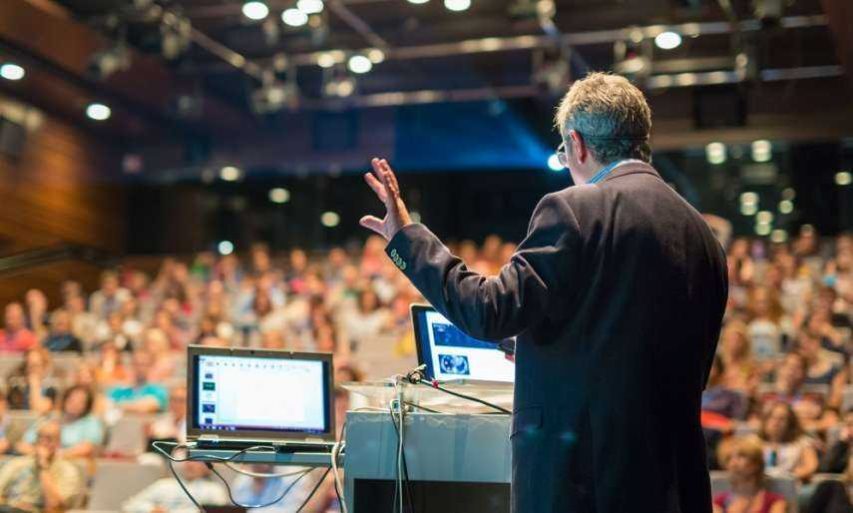This is an edited version of an article originally published in the May 2010 print edition of Teacher.
Research shows that professional learning has a powerful effect on the skills and knowledge of teachers. The tricky research question is how to measure the impact of that professional learning on actual classroom practice and, as a result, on student learning. Steve Holden reports.
Research shows that, to be effective, professional learning needs to be sustained, focused on content and embedded in the work of collaborative professional learning teams. That’s the conclusion of Professional Learning in the Learning Profession, a research report by Stanford University’s Linda Darling-Hammond and a team of researchers from Stanford’s School Redesign Network published by the National Staff Development Council in the United States in February last year.
Episodic, fragmented and disconnected
The professional learning most US teachers receive, explained Darling-Hammond, is episodic, often fragmented and disconnected from real problems of practice. ‘The research tells us that teachers need to learn the way other professionals do – continually, collaboratively and on the job,’ she said. ‘The good news is that we (in the US) can learn from what some states and most high-performing nations are doing.’
The even better news is that, from a US point of view, high-performing nations include Australia, alongside Finland, Sweden, Japan, South Korea and Singapore – whose students perform well on international measures such as the Program for International Student Assessment (PISA) and Trends in International Mathematics and Science Study (TIMSS). Of course, there are many and complex reasons why the students of those nations do well on PISA and TIMSS, but, according to Professional Learning in the Learning Profession, one thing they have in common is that those nations invest heavily in the professional learning of teachers.
Effective professional learning, according to Darling-Hammond and colleagues:
- is ongoing and embedded in teachers’ contexts, rather than one-off workshops, and
- involves collaborative planning and the development of materials and pedagogies to deliver the curriculum.
Focus on students, focus on content
In Australia, researchers Lawrence Ingvarson, Marion Meiers and Adrian Beavis in 2005 found that the most effective professional development programs address content, take an active learning approach, include some form of follow-up on knowledge and involve participants in some form of professional community.
The effective programs Ingvarson, Meiers and Beavis looked at provided opportunities for teachers to focus on what students were to learn and how to address any problems they might encounter. They also included opportunities for teachers to engage in a collaborative examination of student work. In essence, ‘They engaged (teachers) in identifying what they needed to learn, and in planning the learning experiences that would help them meet those needs. They provided time for teachers to test new teaching methods and to receive follow-up support and coaching in their classrooms as they faced problems of implementing changes.’ Importantly, they also included feedback for teachers from colleagues about their teaching.
Collaboration and feedback
In their research on effective professional learning, Susan Neuman and Linda Cunningham focused on a coaching model to find out more about the effects of collaboration and feedback for teachers involved in coursework addressing early language and literacy. As they explain in ‘The impact of professional development and coaching on early language and literacy instructional practices,’ ‘Coaches engaged teachers in reflection and goal setting; the coaches helped identify desired outcomes and strategies to achieve these outcomes; (and) collaboratively, they developed an action plan for the implementation of new practices the following week, which became the source of further reflection and action.’ And the impact on student outcomes? ‘There were statistically significant improvements in language and literacy practices for teachers who received coursework plus coaching.’
John Hattie and Helen Timperley’s New Zealand study in 2007 likewise found that feedback to teachers usefully informs professional learning but, they note, any old feedback will not do; it has to be effective. Which is? Effective feedback addresses the task – ‘How am I going?’ – and the process – ‘Where am I going?’ – and regulation – ‘Where to next?’ It’s worth noting, though, as Hattie and Timperley warn, that, ‘Feedback at the self or personal level (usually praise)... is rarely effective.’
Student outcomes
The holy grail for research into effective professional learning, of course, is to find the link between professional learning and improved student outcomes. Darling-Hammond and co, in Professional Learning in the Learning Profession, define effective professional learning in terms of improved teacher knowledge and instructional practice, but say ‘the impact on student achievement is a critical indicator.’
Meiers and Ingvarson in 2005 focused precisely on this critical indicator, investigating the outcomes of 10 professional development programs in 42 primary schools and 28 secondary schools from all education sectors across Australia. Their multi-level analysis of repeated measures of student achievement showed that, in most cases, the students achieved as might have been expected, and that in only a few cases was there improvement that might be attributable to the professional development program.
The problem, as Andrew Wayne, Kwang Suk Yoon, Pei Zhu, Stephanie Cronen and Michael Garet noted in their 2008 study, is timing. ‘Timing is important,’ say Wayne and co, ‘because moving from providing (professional development) to obtaining an impact on achievement involves traversing a number of causal links, and each of these may take time to unfold.’ Put simply, if you want to find the link between improved instruction and detectable increases in students’ learning, you have to know when the effect of the improved instruction kicks in. If it takes longer than a year, in most cases you then have to account for a whole pile of new variables to do with the assignment of students and teachers to particular classes, the effects of other teachers and the effects of the curriculum.
‘Little is known about whether (professional development) can have a positive impact on achievement when a program is delivered across a range of typical settings and when its delivery depends on multiple trainers,’ conclude Wayne and co. ‘Despite a consensus in the literature on the features of effective (professional development), there is limited evidence on the specific features that make a difference for achievement.’
References
Darling-Hammond, L., Wei, R.C., Andree, A., Richardson, N. & Orphanos, S. (2009). Professional Learning in the Learning Profession: A status report on teacher development in the United States and abroad. Dallas, TX: National Staff Development Council.
Hattie, J. & Timperley, H. (2007).The power of feedback. Review of Educational Research. 77(1): 81-112. Available at http://rer.sagepub. com/cgi/content/abstract/77/1/81
Ingvarson, L., Meiers, M. & Beavis, A. (2005). Factors affecting the impact of professional development programs on teachers’ knowledge, practice, student outcomes & efficacy. Education Policy Analysis Archives, 13(10): 1-26. Available at http://epaa.asu.edu/epaa/v13n10/ v13n10.pdf
Neuman, S.B. & Cunningham, L. (2009). The impact of professional development and coaching on early language and literacy instructional practices. American Educational Research Journal, 46(2): 532-566. Available at http://aer.sagepub.com/cgi/content/ abstract/46/2/532
Wayne, A.J., Yoon, K.S., Zhu, P., Cronen, S. & Garet, M.S. (2008). Experimenting with teacher professional development: Motives and methods. Educational Researcher. 37(8): 469-479.
This is an edited version of an article originally published in the May 2010 print edition of Teacher.



